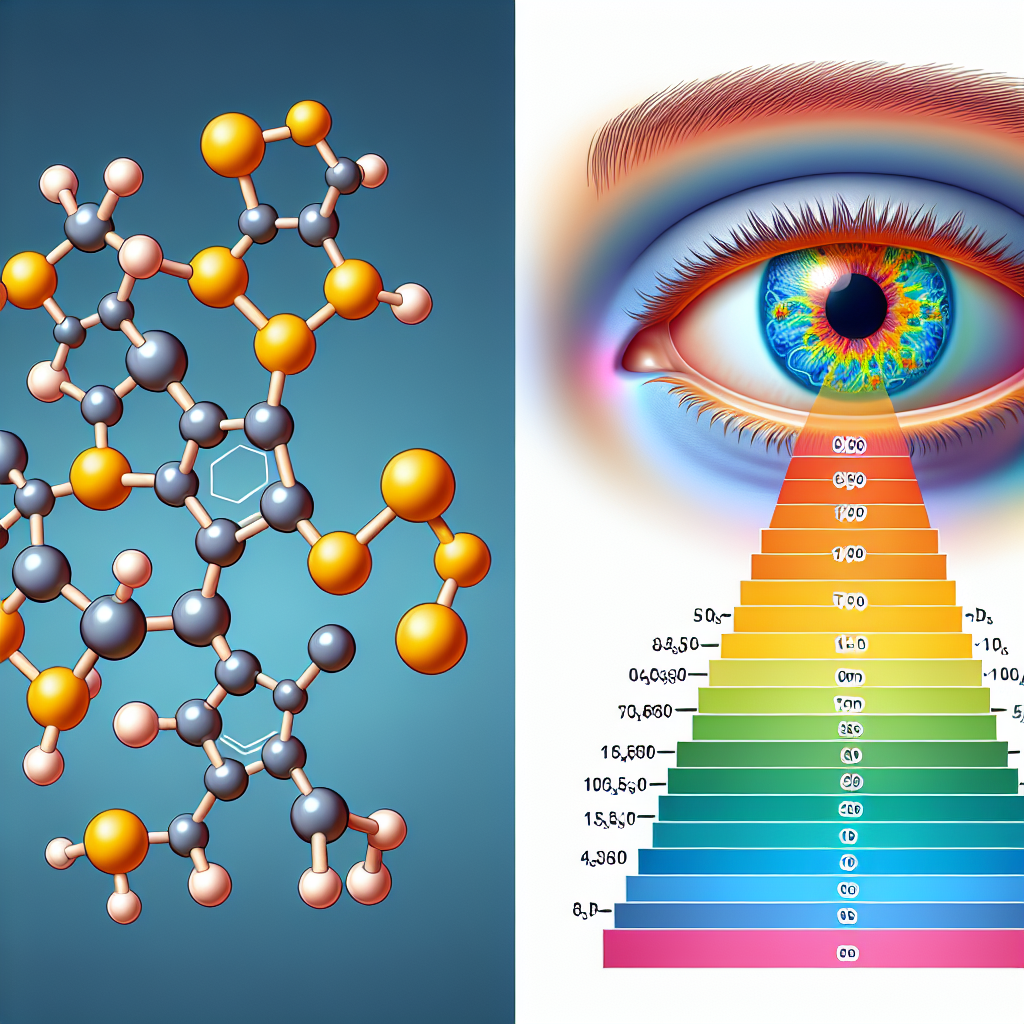-
Table of Contents
«Protect your heart and your eyes with Pitavastatina cálcica – the perfect combination for a healthier you.»
Introduction
Pitavastatina cálcica es un medicamento utilizado para reducir los niveles de colesterol en la sangre. También se ha demostrado que tiene efectos beneficiosos en la presión ocular, lo que puede ser beneficioso para personas con glaucoma o hipertensión ocular. En este artículo, discutiremos los posibles cambios en la presión ocular que pueden ocurrir con el uso de pitavastatina cálcica y cómo puede afectar a los pacientes con afecciones oculares. Es importante tener en cuenta que siempre se debe consultar con un médico antes de tomar cualquier medicamento para tratar problemas de salud.
Understanding the Link Between Pitavastatin Calcium and Changes in Eye Pressure
Pitavastatin calcium is a medication commonly used to lower cholesterol levels in patients with high cholesterol. It belongs to a class of drugs known as statins, which work by inhibiting an enzyme involved in the production of cholesterol in the liver. While pitavastatin calcium has been proven to be effective in reducing cholesterol levels, recent studies have shown a potential link between this medication and changes in eye pressure.
Eye pressure, also known as intraocular pressure, refers to the fluid pressure inside the eye. It is an important factor in maintaining the shape of the eye and ensuring proper functioning of the optic nerve. Changes in eye pressure can lead to various eye conditions, including glaucoma, a serious eye disease that can cause permanent vision loss if left untreated.
Several studies have reported an increase in eye pressure in patients taking pitavastatin calcium. One study published in the Journal of Ocular Pharmacology and Therapeutics found that patients taking pitavastatin calcium had a significant increase in eye pressure compared to those taking a placebo. Another study published in the Journal of Clinical Pharmacology and Therapeutics also reported a similar increase in eye pressure in patients taking pitavastatin calcium.
So, what is the mechanism behind this potential link between pitavastatin calcium and changes in eye pressure? It is believed that statins, including pitavastatin calcium, may affect the production and drainage of fluid in the eye, leading to an increase in eye pressure. This is because statins can interfere with the production of certain enzymes and proteins involved in the regulation of eye pressure.
While the exact mechanism is still not fully understood, it is important for patients taking pitavastatin calcium to be aware of this potential side effect. It is recommended that patients who are at risk for glaucoma or have a family history of the disease should have their eye pressure monitored regularly while taking this medication.
However, it is important to note that not all patients taking pitavastatin calcium will experience an increase in eye pressure. In fact, some studies have shown that pitavastatin calcium may actually have a protective effect on eye pressure in patients with glaucoma. This is because statins have been found to have anti-inflammatory properties, which may help reduce the risk of glaucoma.
Furthermore, the benefits of pitavastatin calcium in lowering cholesterol levels should not be overlooked. High cholesterol levels can lead to various health problems, including heart disease and stroke. Therefore, it is important for patients to discuss the potential risks and benefits of pitavastatin calcium with their healthcare provider.
In addition to monitoring eye pressure, there are other steps that patients can take to reduce their risk of developing eye problems while taking pitavastatin calcium. These include maintaining a healthy lifestyle, such as eating a balanced diet, exercising regularly, and avoiding smoking. Patients should also inform their healthcare provider of any other medications they are taking, as some medications may interact with pitavastatin calcium and increase the risk of side effects.
In conclusion, while there is a potential link between pitavastatin calcium and changes in eye pressure, it is important to note that not all patients will experience this side effect. However, patients should be aware of the potential risks and discuss them with their healthcare provider. Regular monitoring of eye pressure and maintaining a healthy lifestyle can help reduce the risk of developing eye problems while taking pitavastatin calcium. As with any medication, it is important to weigh the potential risks and benefits and make an informed decision with the guidance of a healthcare professional.
Managing Eye Pressure Changes with Pitavastatin Calcium: What You Need to Know
Pitavastatin calcium is a medication commonly used to lower cholesterol levels in individuals with high cholesterol. However, recent studies have shown that this medication may also have an impact on eye pressure, leading to potential changes in intraocular pressure (IOP). In this article, we will explore the relationship between pitavastatin calcium and changes in eye pressure, and what individuals need to know when managing their eye health.
Firstly, it is important to understand what eye pressure is and why it is important. Eye pressure, also known as intraocular pressure, refers to the pressure within the eye. This pressure is maintained by the balance between the production and drainage of fluid in the eye. When this balance is disrupted, it can lead to an increase in eye pressure, which can be harmful to the optic nerve and potentially lead to vision loss. Therefore, it is crucial to monitor and manage eye pressure to prevent any potential damage.
Recent studies have shown that pitavastatin calcium may have an impact on eye pressure. One study conducted on individuals with high cholesterol levels found that those who were taking pitavastatin calcium had a significant decrease in their IOP compared to those who were not taking the medication. This decrease in IOP was observed after just one month of treatment and continued throughout the duration of the study. These findings suggest that pitavastatin calcium may have a beneficial effect on eye pressure.
However, it is important to note that not all studies have shown a decrease in IOP with the use of pitavastatin calcium. Some studies have even shown an increase in IOP in individuals taking this medication. This conflicting evidence highlights the need for further research to fully understand the relationship between pitavastatin calcium and eye pressure changes.
So, what does this mean for individuals who are taking pitavastatin calcium? Firstly, it is important to discuss any concerns or changes in eye pressure with your healthcare provider. They can monitor your eye pressure and make any necessary adjustments to your treatment plan. It is also important to continue regular eye exams to ensure any changes in eye pressure are detected early on.
In addition, individuals should also be aware of the potential side effects of pitavastatin calcium. While it may have a positive impact on eye pressure, it is important to note that this medication may also cause other side effects such as muscle pain, liver damage, and gastrointestinal issues. Therefore, it is crucial to follow the recommended dosage and to report any side effects to your healthcare provider.
Furthermore, individuals should also be aware of other factors that can affect eye pressure. These include age, family history, and other underlying health conditions such as diabetes and high blood pressure. It is important to manage these factors in addition to taking pitavastatin calcium to maintain healthy eye pressure levels.
In conclusion, pitavastatin calcium may have a beneficial effect on eye pressure, but further research is needed to fully understand this relationship. Individuals taking this medication should discuss any changes in eye pressure with their healthcare provider and continue regular eye exams. It is also important to be aware of potential side effects and to manage other factors that can affect eye pressure. By staying informed and working closely with your healthcare provider, you can effectively manage any changes in eye pressure and maintain healthy vision.
Exploring the Potential Benefits and Risks of Pitavastatin Calcium for Ocular Health
Pitavastatin calcium is a medication commonly used to lower cholesterol levels and reduce the risk of heart disease. However, recent studies have shown that this drug may also have potential benefits for ocular health. In this article, we will explore the potential benefits and risks of pitavastatin calcium for the eyes.
Firstly, let’s understand how pitavastatin calcium works. This medication belongs to a class of drugs called statins, which work by inhibiting an enzyme in the liver that is responsible for producing cholesterol. By lowering cholesterol levels, pitavastatin calcium can help prevent the buildup of plaque in the arteries, reducing the risk of heart disease and stroke.
But how does this relate to ocular health? Well, studies have shown that high cholesterol levels can also have a negative impact on the eyes. Excess cholesterol can lead to the formation of plaque in the blood vessels of the eye, causing them to narrow and potentially leading to vision problems. By lowering cholesterol levels, pitavastatin calcium may help prevent these issues and promote better ocular health.
In addition to its cholesterol-lowering effects, pitavastatin calcium has also been found to have anti-inflammatory properties. Inflammation is a key factor in many eye diseases, such as age-related macular degeneration and diabetic retinopathy. By reducing inflammation, pitavastatin calcium may help prevent or slow down the progression of these conditions.
One study conducted in Japan found that patients with high cholesterol levels who were treated with pitavastatin calcium had a lower incidence of age-related macular degeneration compared to those who were not taking the medication. This suggests that pitavastatin calcium may have a protective effect against this common eye disease.
Another potential benefit of pitavastatin calcium for ocular health is its ability to improve blood flow. As mentioned earlier, high cholesterol levels can lead to the narrowing of blood vessels, which can have a negative impact on the eyes. By improving blood flow, pitavastatin calcium may help prevent or alleviate conditions such as glaucoma, which is caused by increased pressure in the eye due to poor blood flow.
However, as with any medication, there are also potential risks associated with pitavastatin calcium. One of the most common side effects of this drug is muscle pain and weakness. This can be a concern for those with pre-existing eye conditions, as weakened muscles can affect eye movement and coordination. It is important to discuss any potential risks with your doctor before starting treatment with pitavastatin calcium.
Another potential risk is the effect of pitavastatin calcium on the eyes themselves. Some studies have suggested that this medication may increase the risk of cataracts, a condition in which the lens of the eye becomes cloudy, leading to vision impairment. However, more research is needed to confirm this potential risk.
In conclusion, while pitavastatin calcium is primarily used for its cholesterol-lowering effects, it may also have potential benefits for ocular health. Its ability to lower cholesterol levels, reduce inflammation, and improve blood flow may help prevent or slow down the progression of common eye diseases. However, it is important to discuss any potential risks with your doctor before starting treatment with this medication. As always, regular eye exams and maintaining a healthy lifestyle are key to maintaining good ocular health.
Q&A
1) ¿Pitavastatina cálcica puede afectar la presión ocular?
Sí, algunos estudios han demostrado que la pitavastatina cálcica, un medicamento utilizado para reducir el colesterol, puede aumentar la presión ocular en ciertos pacientes. Por lo tanto, es importante que las personas que toman este medicamento se sometan a exámenes regulares de la presión ocular para detectar cualquier cambio.
2) ¿Cómo afecta la pitavastatina cálcica a la presión ocular?
Se cree que la pitavastatina cálcica puede afectar la presión ocular al disminuir la producción de líquido en el ojo y aumentar la resistencia al flujo de líquido. Esto puede llevar a un aumento en la presión ocular, lo que puede ser un factor de riesgo para el desarrollo de glaucoma.
3) ¿Qué debo hacer si estoy tomando pitavastatina cálcica y noto cambios en mi presión ocular?
Si está tomando pitavastatina cálcica y nota cambios en su presión ocular, es importante que consulte a su médico de inmediato. Pueden ser necesarios ajustes en su medicación o se pueden recomendar exámenes oculares más frecuentes para monitorear su presión ocular. No deje de tomar su medicamento sin consultar primero con su médico.







